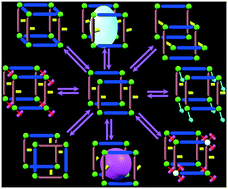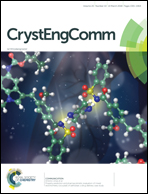Structure and properties of dynamic metal–organic frameworks: a brief accounts of crystalline-to-crystalline and crystalline-to-amorphous transformations
Abstract
In the last decade, dynamic metal–organic frameworks (MOFs) have been under the intense scrutiny of chemical researchers for their potential applications in many interesting fields. Due to the flexibility in the structure, this class of materials can recognize or respond towards a signal by changing their structural architecture as well as their physiochemical properties. Therefore dynamic MOFs can be considered as “smart materials” for their use in many future technologies. All the transformations of a dynamic MOF occur through solid-state structural changes, hence these dynamicity driven materials sometimes have unique structures that cannot be derived by conventional synthetic methods. So far, a mammoth study has been performed about the synthetic procedures and applications of dynamic metal–organic frameworks. The stimuli response, which is the most important parameter in the dynamism of such structures, has also been elaborately discussed. Most of the previous review works in this area have covered the structure-stimuli-application flowchart, but in this highlight we discuss the point-to-point structural changes with an aim to understand the dynamicity pathway process of MOFs. Some associated changes in their properties, precisely, after and before structural changes, are also covered.

- This article is part of the themed collection: 2018 Highlight article collection


 Please wait while we load your content...
Please wait while we load your content...